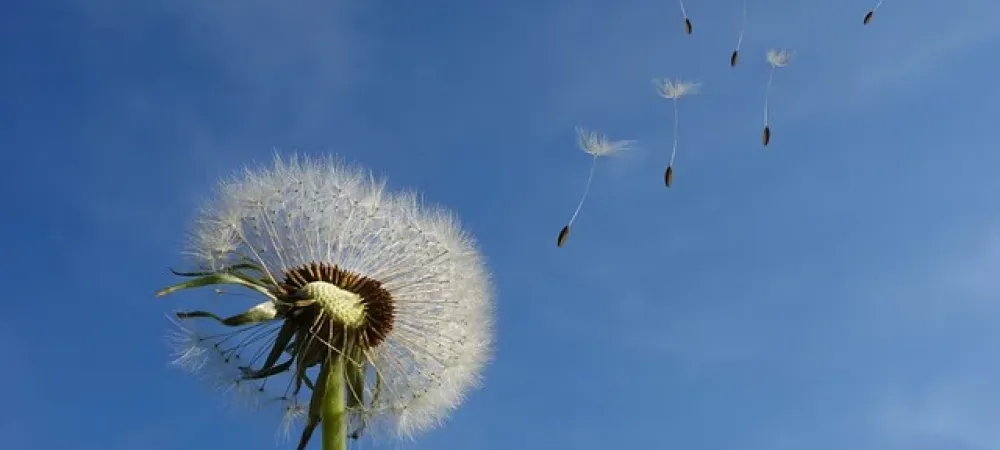How to Get Rid of Weeds in Grass

Weeds in grass can be a frustrating problem for homeowners and gardeners. These unwanted plants can quickly spread and compete with desirable grass for nutrients, water, and sunlight. To effectively get rid of weeds, it's important to understand the different types and methods to get rid of them once and for all.
Common Lawn Weeds
The Northeast region of the United States is known for its diverse climate and vegetation, which can make it difficult to control certain types of weeds. Effective weed control involves identifying the specific types of weeds in your lawn. Some of the most common weeds found in this region include:
- Dandelions - These are easily recognizable by their bright yellow flowers and round, lobed leaves.
- Crabgrass - This annual weed has a distinctive seedhead that resembles a crab's leg.
- Plantains - These broadleaf weeds have long, pointed leaves that grow in a rosette pattern.
- Clover - This low-growing weed has small, white or pink flowers and trifoliate leaves.
- Chicory - This tall, blue-flowered weed is commonly found along roadsides and in fields.
- Burdock - This weed has large, heart-shaped leaves and spiky burrs that stick to clothing and animals.
- Violets - These low-growing weeds have purple or blue flowers and heart-shaped leaves.
How To Get Rid Of Weeds
Getting rid of weeds can be accomplished through several methods, including:
Mowing Your Lawn
Mowing your lawn is a great way to get rid of weeds! It's an economical and simple solution that can be done on your own. If you're new to mowing, here are some steps to follow:
- Start by setting the height of your mower. Be sure to choose the right height for the job - too low and you may damage the grass, while too high and it won't cut properly.
- Move in a pattern across the lawn, making sure to overlap each strip slightly when you turn around at the end. This will ensure a more even cut throughout.
- Pay attention to edges and corners as these areas may require extra care.
- After mowing, it's important to rake up any clippings left behind so they don't smother new growth.
Hand Weeding
Hand weeding is an effective way to remove pesky weeds from your garden or lawn. It's a great organic solution that won't leave any chemical residue behind. Here are some tips for successful hand weeding:
- Start by removing weed leaves, roots, and stems by firmly gripping them near the base and pulling them out with a twisting motion. Be careful not to disturb surrounding plants.
- Use tools such as trowels or hoes to dig deep and carefully remove large weeds with deep roots.
- For hard-to-reach areas, use tools like tweezers to carefully pluck weeds out.
- After weeding, loosen the soil around the root of remaining healthy plants so they can grow stronger and more easily absorb water and nutrients.
Mulching
Mulching is an effective and eco-friendly way to get rid of weeds in your garden or lawn. By creating a protective layer around plants, mulching helps insulate them from weeds and other pests. Here are some tips for successful mulching:
- Choose the right kind of mulch for your project - there are many types available, such as wood chips, shredded bark, straw, or compost.
- Spread the mulch evenly around plants so that they're fully covered and no gaps remain. Be careful not to heap it too high or create thick layers as this can damage plant roots.
- Use an organic pre-emergent weed killer before adding the mulch if you have persistent weeds. This will create a barrier and prevent new weeds from taking root in the area.
- Refresh existing mulch once a year to keep the ground covered and healthy - this will also add nutrients into the soil when it decomposes over time.
Herbicides
Herbicides can be effective in getting rid of weeds but it's important to use them with caution. Here are some tips for successful weed control using herbicides:
- Choose an appropriate weed killer for your project and make sure the label is readable.
- Always read and follow all instructions on the label to ensure proper application - this includes wearing protective clothing, such as long pants, gloves, and a hat.
- Apply only to targeted weeds, not desirable plants or turf grass, to avoid damaging these beneficial organisms.
- Use spot treatments whenever possible to minimize the amount of herbicide you need to use overall.
- Use a sprayer attachment for easy application of liquid herbicides and keep away from children and pets during and after use.
It is important to note that some methods may be more effective than others, and the most effective method will depend on the specific weed species, the environment, and the goals of the homeowner or gardener. Before using any weed control method, it is important to carefully read and follow all product labels and safety precautions. If your problem persists and you are in need of professional weed control, contact your local experts at Custom Turf!
